May 23, 2023
Stunning Houseplants for Foliage and Flowers
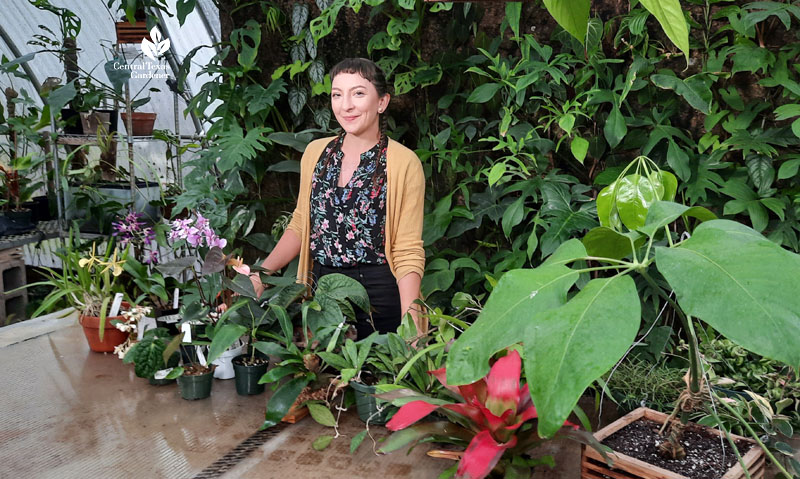
A lot of us garden indoors, even if we grub around outside. Since mosquito season is upon us, and the muggy meter’s dialing up, Melissa Hagen-Wilson, houseplant manager at Tillery Street Plant Company, steps us through some intriguing, low-care plants to enchant our air-conditioned harbor and bright light patios and porches.
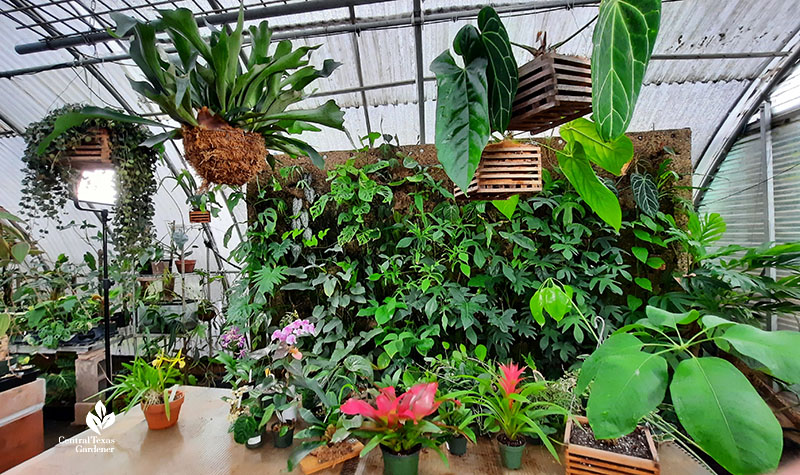
Go for bold foliage and bonus flowers with hoyas, anthuriums and bromeliads that companion nicely with the orchids we can’t resist.
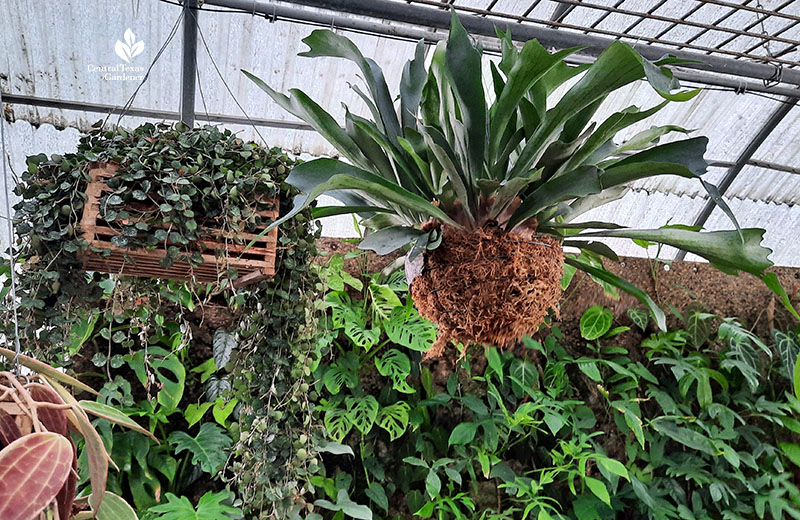
Power up foliar dimension with staghorn ferns, mounted on wood or in hanging baskets outside or in (inside during winter always). To the left, Hoya curtisii charms up a hanging basket in bright light. Hoyas can also go outside in warm weather, but keep them out of direct sun.
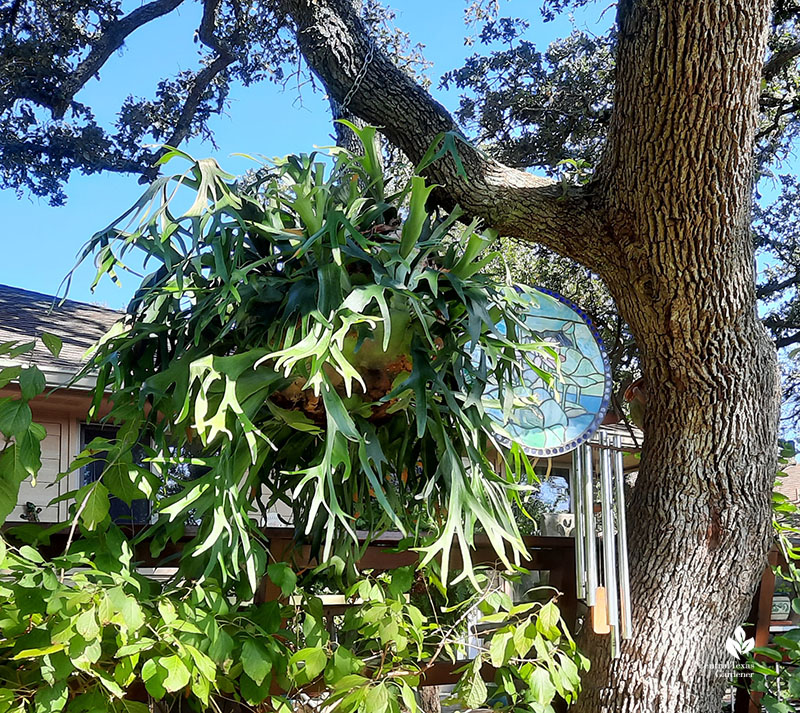
By the way, Melissa tells us that staghorns are the ONLY plant she mists indoors. “It’s really common to get fungal issues if you’re misting normal houseplants indoors. We just don’t have a good enough airflow inside of our houses most of the time.”
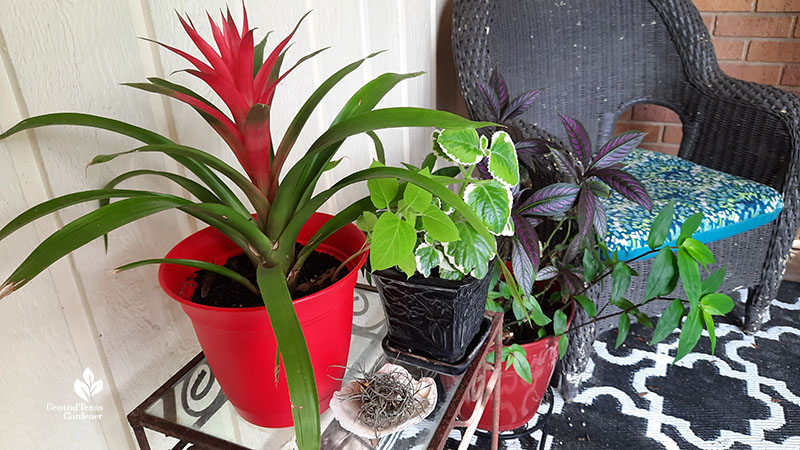
Tank bromeliads are tidy, budget-friendly, easy to grow, and work great in bright indoor light and on summertime shaded patios. I couldn’t resist bringing one home for my front porch collection to join white-edged, fragrant Cuban oregano and a purple-hued Persian shield overwintered with draping tradescantia. All will head inside next winter. My husband unwittingly styled it up with a ball moss he picked up and cleverly deposited in the million-year-old oyster shell we found in the creek behind our house.
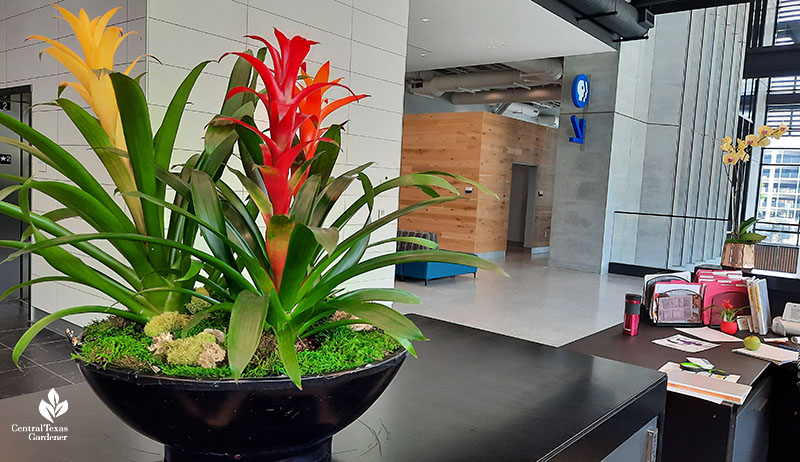
A trio of jewel-colored bromeliads adorns the ACC Highland reception foyer and entrance to the Austin Media Center, courtesy of Ralph Rios, an ACC floral design instructor. On the far right, an orchid extends a gracious greeting to one and all.
Melissa’s tip for watering tank bromeliads: “You actually want to water in the cup of the bromeliad in addition to watering the soil. This is going to help your flowers to last longer. Watering in the sides of the bromeliad is kind of how it happens in nature.”
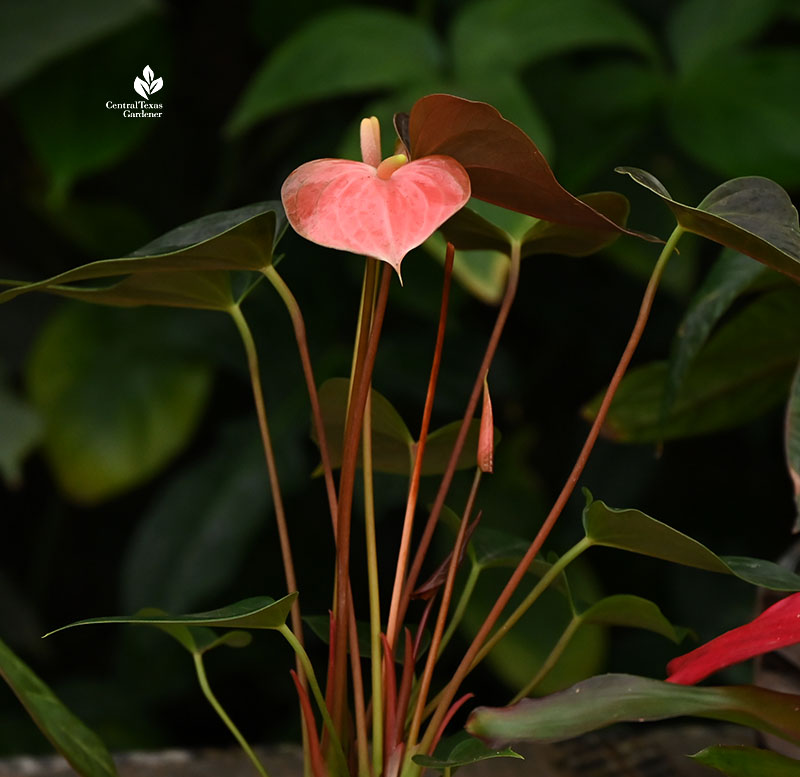
Dutch anthurium’s another bright light beauty that always steals my heart with elegant clasping heart-shaped spathes.
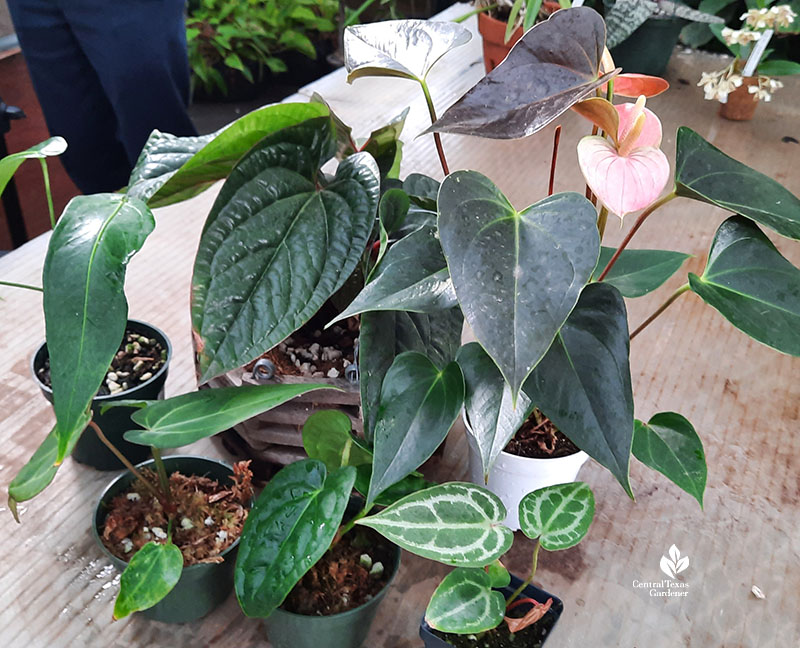
Mainly, anthuriums wow us with stunning foliage in bright, indoor light. Bring them outside in warm weather, but once again, keep out of direct sunlight, and bring back inside next fall. Melissa noted that they need humid conditions, even 60 to 80% ambient humidity for some. All need a very barky mix. “These plants, as they do grow in trees similar to orchids, really like that airy, well-draining soil,” she said.
Here’s one recipe she shared
• 3 parts orchid bark
• 2 parts good quality potting soil
• 2 parts pumice or perlite
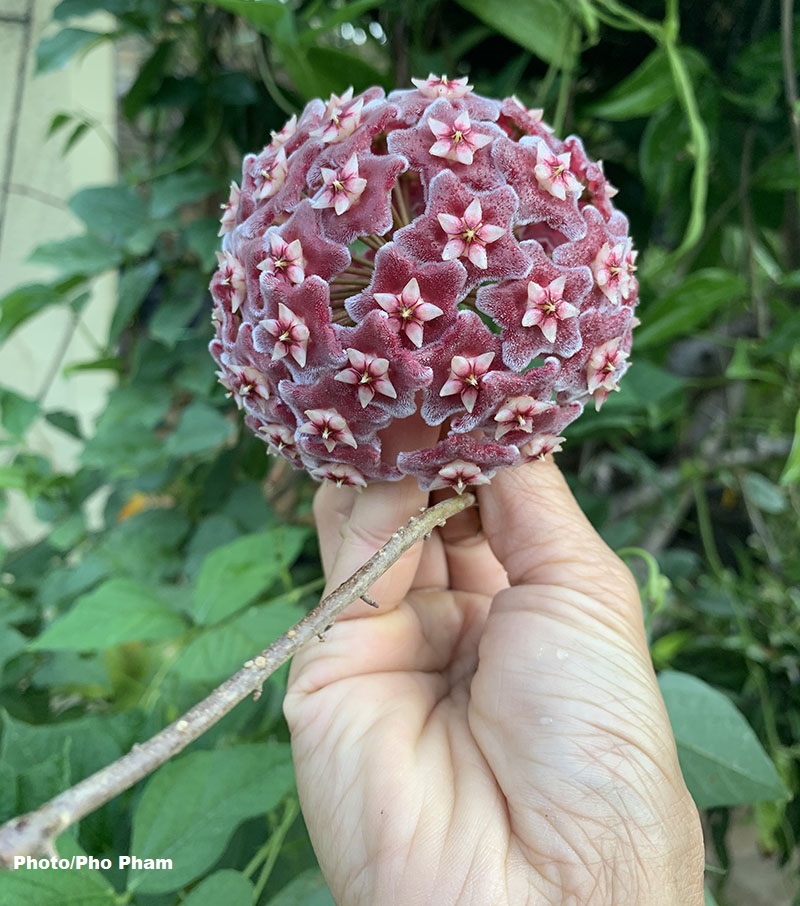
I discovered hoyas when we visited Pho Pham’s garden in January. She brings their hanging baskets outside on warm winter days and in summer, returning them to the garage when things get nippy. In summer, bees and butterflies head to those luscious flowers.
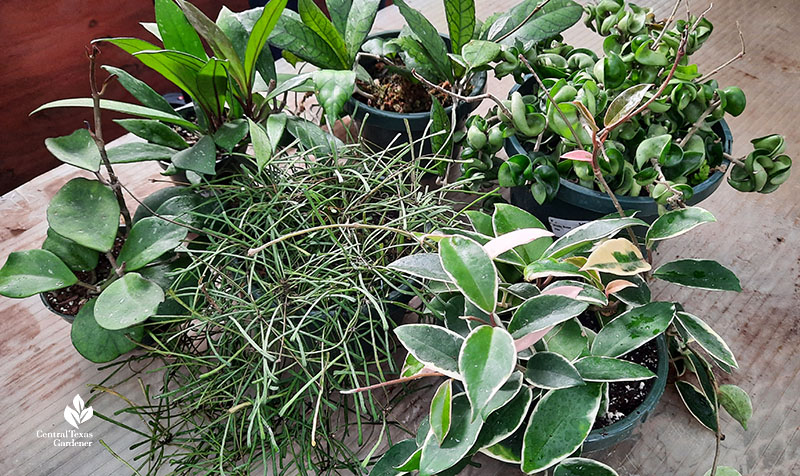
There are countless forms and foliar shades, too. Hindu rope plant (Hoya carnosa ‘Compacta’) reminds me of tortellini! Hoya retusa looks like spaghetti gone wild. Hoyas are really easy to care for. “You can really treat them like a succulent, letting them dry out between watering and making sure they’re in a really good well-drained soil,” she said.
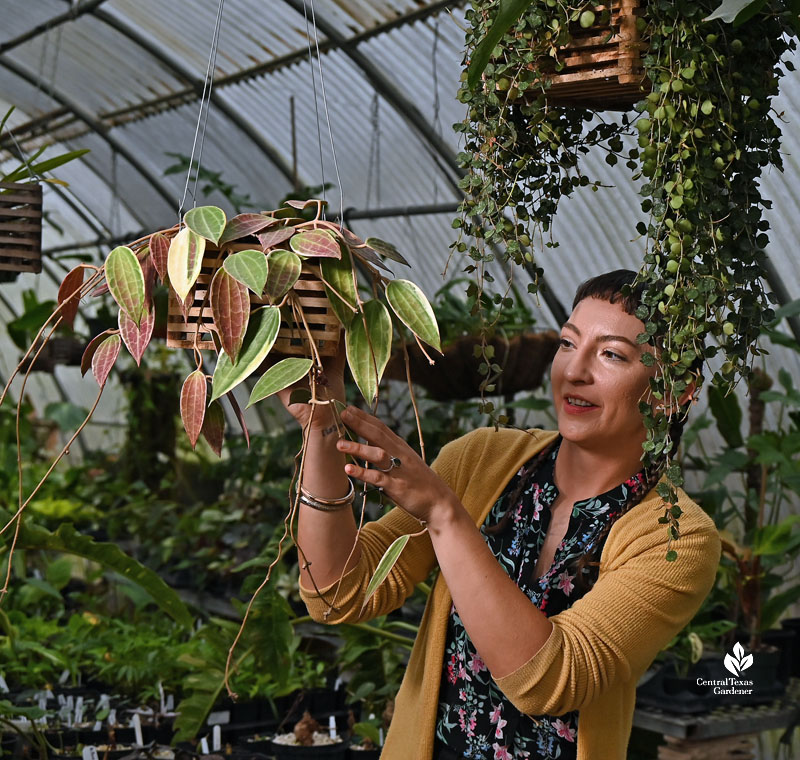
Here Melissa shows off sun stress on Hoya macrophylla’s peduncle (the stalk or stem bearing flower or fruit) and the leaves are a bit red. “So when you have hoyas in really bright light, it’s common for them to turn red or brighter orange colors and it goes away when the bright light goes away,” she said.
All these plants benefit from liquid seaweed, she noted. We can use a balanced fertilizer on staghorns and anthuriums. Bat guano and worm castings benefit hoyas.
Watch now for all Melissa’s tips!
Thanks for stopping by!
Linda
tags:

